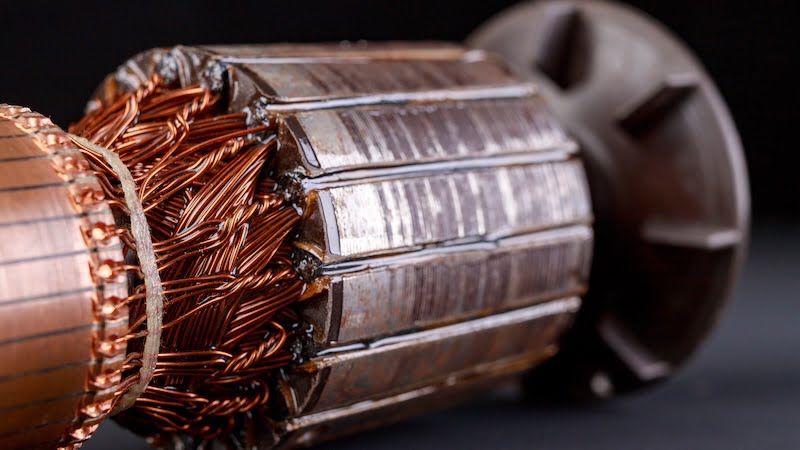
In a car, an electric motor converts electrical energy into mechanical energy to drive the vehicle. We'll tell you exactly how an electric motor works.
An electric motor draws its energy from a battery that consists of several cells. These store electrical energy in chemical form and can release it when needed. The performance of a battery, in turn, determines the range and performance of an electric car.
How does an electric motor work?
A battery can transfer electrical energy to a motor through what is known as power electronics. This system includes an inverter and control devices that convert direct current energy into alternating current energy required by the motor.
There are several types of electric motors used in electric cars. These include: the DC motor, the AC induction motor and the permanent magnet synchronous motor. All of these motor types have certain advantages and disadvantages in terms of efficiency, cost and performance.
Electric motors are based on the principle of electromagnetism. Inside the motor there are windings through which the electric current flows and creates a magnetic field. This magnetic field interacts with the magnetic rotor, which is located inside the windings and creates a rotary motion. This is used to drive the wheels of a vehicle.
Another special feature of electric motors in cars is the so-called regenerative brake. An electric motor is used as a generator to convert kinetic energy during braking back into electrical energy and store it in the battery. This can increase the range and efficiency of vehicles.
The advantages of an electric motor
The power electronics and control units in the vehicle regulate the speed and torque of the engine. Sensors monitor operating conditions and ensure that the engine operates efficiently and safely.
Electric motors have a number of advantages over traditional combustion engines. They do not cause any direct emissions, are quieter and sometimes more efficient. According to TÜV, the efficiency of an electric motor is significantly higher.
In concrete terms, this means that a large proportion of the electrical energy supplied is converted into mechanical energy. While a combustion engine only achieves an efficiency of 30 percent on average, the value for electric motors is up to 80 percent.
As battery technology and electric motors advance, electric vehicles are becoming more powerful and attractive to the mass market.
Also interesting:
Source: https://www.basicthinking.de/blog/2024/07/10/wie-funktioniert-eigentlich-ein-elektromotor/


